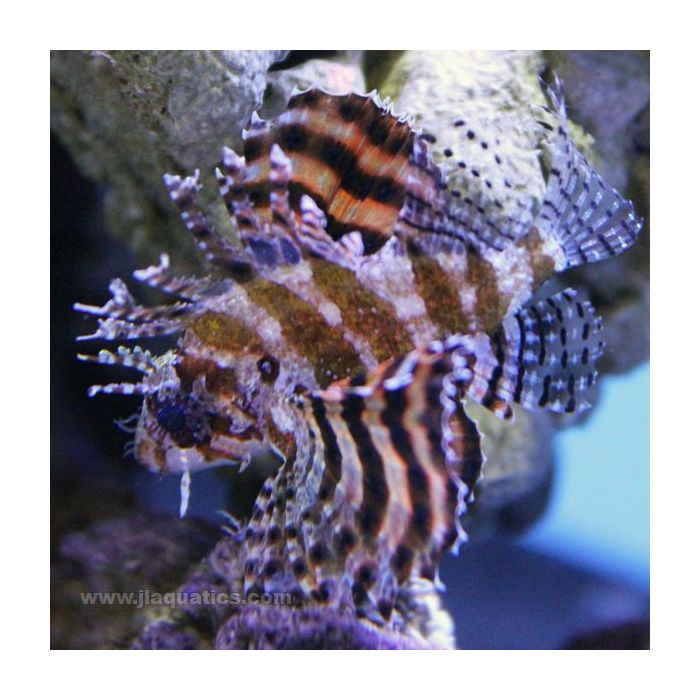Shortfin Lionfish (Asia Pacific)
As the ocean's most spectacular ambush predators, it is no wonder lionfish are so popular. Their huge fins are used to confuse and herd smaller animals so the lionfish can swallow them whole with their huge mouths. They greedily eat all shrimp many crabs, and any small or slender bodied fish. They do not harm corals, sponges, macroalgae or snails. They generally ignore anything that cannot be eaten. Best tank mates are large bodied fish such as tangs, angelfish, groupers, triggerfish and puffers. Sometimes the slow moving lionfish may become a target for aggressive fish. If added at the same time, and if of similar size, several lionfish may be kept together as long as there is at least one private refuge in the rocks for each fish. Most species are imported from Bali.
The tips of the lionfish's fins contain a toxin that can cause extremely painful wounds. The sting may be as mild as a hornet sting or much worse- great care should be taken when handling the lionfish, and children should never be allowed to put their fingers in the water with the fish.
Lionfish feed by sucking in their food whole into their enormous mouths. They are carnivores and should be fed at least once every two or three days a high quality diet of krill, silversides and chopped seafood. They are heavy feeders and thus strong filtration is necessary. Live food may initially be necessary, and the fish trained to eat off a feeding stick.
The Shortfin, or Fuzzyfin lionfish is uncommon and very beautiful. Its stout body is cream colored and is banded with earthy colored stripes which become thinner and darker as they extend onto its fins. Its fin rays are completely connected, and its dorsal fin has trailing flaps. Tank mates should not be so boisterous as to steal its food. It may spend most of its day out in the open, but required plenty of hiding places to feel secure. Males and females are visually identical. It grows to 7 inches; we recommend an aquarium of at least 50 gallons.
















